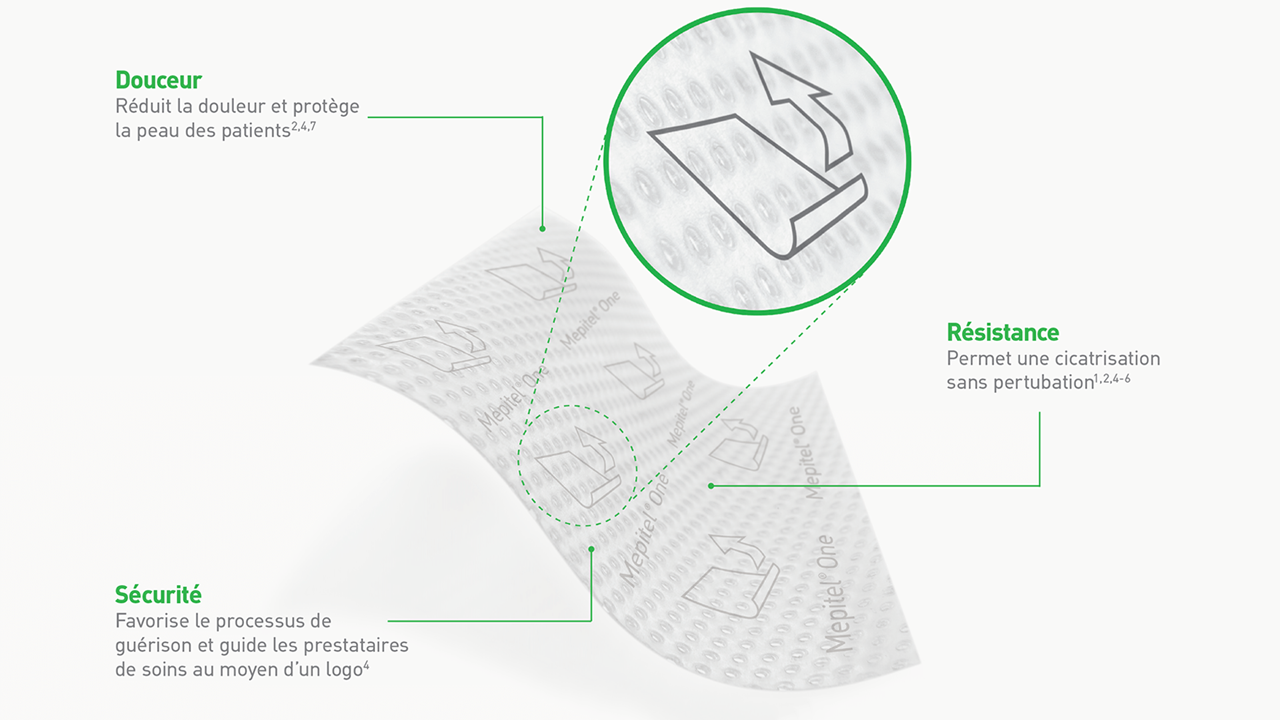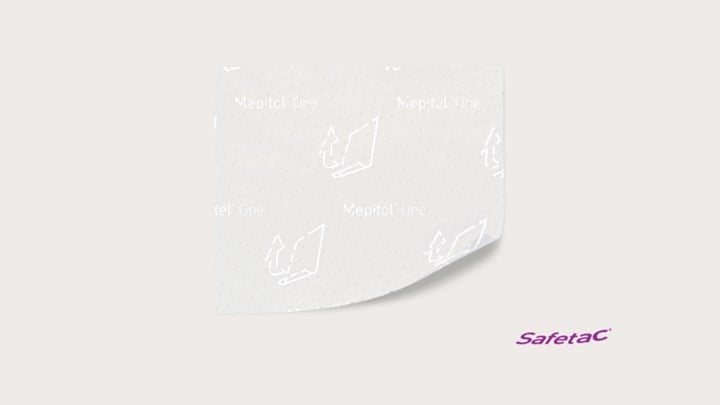Découvrez notre dernière innovation produit pour des déchirures cutanées type 1
Mepitel® One, la couche de contact transparente et flexible, unique en son genre. Désormais également disponible avec un logo de retrait pré-imprimé pour un retrait en toute sécurité des déchirures cutanées. Les numéros d’article existants restent disponibles pour d’autres indications.

Informations pour la commande du nouveau Mepitel® One pour des déchirures cutanées :
| Code CNK | N° art. | Description | Dimensions | RET | TRP |
|---|---|---|---|---|---|
| 3958-543 | 289170 | Mepitel One avec logo de retrait | 6x7 | 5 | 70 |
| 3958-550 | 289270 | Mepitel One avec logo de retrait | 9x10 | 5 | 50 |
| 3958-568 | 289470 | Mepitel One avec logo de retrait | 13x15 | 5 | 50 |
Références : 1. Bugmann P.H. et al. A silicone coated nylon dressing reduces healing time in burned paediatric patients in comparison with standard sulfadiazine treatment: a prospective randomized trial. Burns, 1998. 2. Patton P. et al. An open, prospective, randomized pilot investigation evaluating pain with the use of a soft silicone wound contact layer vs bridal veil and staples on split thickness skin grafts as a primary dressing. Journal of Burn Care and Research, 2013. 3. Adamietz, I. A. et.al. Effect of Self-Adhesive, Silicone-Coated Polyamide Net Dressing on Irradiated Human Skin. Radiation Oncology Investigations, 1995. 4. David F. et al. A randomised, controlled, non-inferiority trial comparing the performance of a soft silicone-coated wound contact layer (Mepitel One) with a lipidocolloid wound contact layer (UrgoTul) in the treatment of acute wounds. International Wound Journal, 2017. 5. Collin O. Use of Mepitel One dressing following hand surgery: a case study series. Poster presentation at Wounds UK Conference, United Kingdom, 2009. 6. Mölnlycke lab report 20081210-003. Data on file. 7. Edwards J, et al. Hand burn management: minimizing pain and trauma at dressing change. BJON. 2013; Vol 22, No 20.
 Mepitel One interface transparente siliconée d'un seul côté
Mepitel One interface transparente siliconée d'un seul côté



